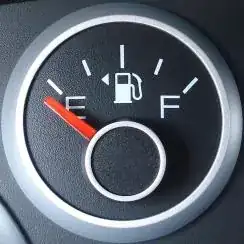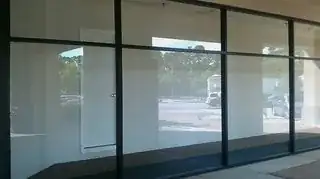Most cars will have the fuel cap on the drivers side of the vehicle. in America this is on the left side of the car. Cars made in America will all follow this standard, which means Chrysler, Ford and GM will generally all be on the left side of the vehicle.
In some other countries you drive on the opposite side of the road and therefore the driver is in the right side of the car, the fuel cap will then be on the right. When the cars are built for markets, such as American ones where we drive on the right side of the road, the cabin is retrofired such that the driver is placed on the left side of the vehicle but the gas cap remains on the right side of the car.
This of course isnt an exact science but I have found it to hold true for most cases.
TLDR; American made cars its on the left, foreign imported cars on the right.
I did a bit more research on the topic and came up with this interesting bit of info
https://www.quora.com/How-do-car-makers-decide-what-side-to-put-the-gas-tank-on#ld_lwqreh_45412 . Below is a quote from the website just in case it goes dead.
Patterns: For single exhaust vehicles, the gas filling opening is on the opposite side of the exhaust, I've heard that this makes engineering the underbody easier: Japanese cars tend to have the exhaust on the right and American+German cars tend to have the exhaust on the left. Possible explanations for placing the filler opposite the driver include emergency fueling while pulled over. This also holds for placing the filler on the left for Japanese cars since Japan drives on the left [1]
.. then further down
Patterns for individual automakers (with a few exceptions, not all listed):
It would be neat to see an infographic organizing this.
Japanese (90%+ left): Japanese cars are consistent within their model
lines and even parent companies. The rate of exceptions is probably
under 10% of vehicles produced in a given time period.
Honda/Acura: Left Toyota/Lexus: Left Nissan: Left (right: 350Z/G35 and
370Z/G37) Mazda: Left (Mazda3 right due to Ford influence) Mitsubishi:
Left Subaru: Right
German: German automarkers tend to place the filler on the right, more
consistently than American cars.
BMW: Right
Mercedes-Benz: Right
VW/Audi: Right
American: My knowledge of American cars is less, but they tend to be
less consistent within their model lines and as a whole. Also, the
relationship between parent companies is murkier.
Ford: Right (new Mustang is left, old Mustangs are right, Probe is
left probably due to Mazda influence)
Chevrolet cars: Left.
Chevrolet Trucks/SUVs: Right
Dodge: Left (Viper is right)
Korean:
Kia: Left
Hyundai: Left


